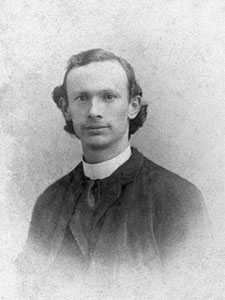Anarcho-syndicalism
Political philosophy and anarchist school of thought
Lua error in package.lua at line 80: module 'strict' not found.
Anarcho-syndicalism is a political philosophy and anarchist school of thought that views revolutionary industrial unionism or syndicalism as a method for workers in capitalist society to gain control of an economy and, with that control, influence broader society. The end goal of anarcho-syndicalism is to abolish the wage system, regarding it as a form of slavery, and to establish a system of direct democracy and workers' self-management.
Principles[edit | edit source]
Anarcho-syndicalism is built on several core principles:
- Direct action: The use of strikes, boycotts, and other forms of protest to achieve goals without relying on intermediaries.
- Workers' self-management: The idea that workers should manage their own workplaces and industries.
- Direct democracy: Decision-making processes that involve all members of a group or community, rather than being made by elected representatives.
Historical Development[edit | edit source]
Anarcho-syndicalism emerged in the late 19th and early 20th centuries, influenced by the broader anarchist movement and the rise of industrial unionism. Key figures in the development of anarcho-syndicalism include Rudolf Rocker, Emile Pouget, and Buenaventura Durruti.
The movement gained significant traction in countries like Spain, where the Confederación Nacional del Trabajo (CNT) played a crucial role during the Spanish Civil War. In other countries, such as France and Italy, anarcho-syndicalist ideas influenced the labor movement and contributed to the formation of various trade unions.
Organizational Structure[edit | edit source]
Anarcho-syndicalist organizations typically operate on a decentralized basis, with a focus on federations of local unions. These federations are often organized by industry or region and are designed to facilitate cooperation and mutual aid among workers.
Modern Anarcho-syndicalism[edit | edit source]
Today, anarcho-syndicalism continues to influence various labor movements and anti-capitalist organizations around the world. Groups such as the Industrial Workers of the World (IWW) and the International Workers' Association (IWA) uphold anarcho-syndicalist principles and advocate for workers' rights and self-management.
Related Pages[edit | edit source]
- Anarchism
- Syndicalism
- Direct action
- Workers' self-management
- Direct democracy
- Confederación Nacional del Trabajo
- Industrial Workers of the World
- International Workers' Association
| Syndicalism | ||||||||||
|---|---|---|---|---|---|---|---|---|---|---|
|
Search WikiMD
Ad.Tired of being Overweight? Try W8MD's physician weight loss program.
Semaglutide (Ozempic / Wegovy and Tirzepatide (Mounjaro / Zepbound) available.
Advertise on WikiMD
|
WikiMD's Wellness Encyclopedia |
| Let Food Be Thy Medicine Medicine Thy Food - Hippocrates |
Translate this page: - East Asian
中文,
日本,
한국어,
South Asian
हिन्दी,
தமிழ்,
తెలుగు,
Urdu,
ಕನ್ನಡ,
Southeast Asian
Indonesian,
Vietnamese,
Thai,
မြန်မာဘာသာ,
বাংলা
European
español,
Deutsch,
français,
Greek,
português do Brasil,
polski,
română,
русский,
Nederlands,
norsk,
svenska,
suomi,
Italian
Middle Eastern & African
عربى,
Turkish,
Persian,
Hebrew,
Afrikaans,
isiZulu,
Kiswahili,
Other
Bulgarian,
Hungarian,
Czech,
Swedish,
മലയാളം,
मराठी,
ਪੰਜਾਬੀ,
ગુજરાતી,
Portuguese,
Ukrainian
Medical Disclaimer: WikiMD is not a substitute for professional medical advice. The information on WikiMD is provided as an information resource only, may be incorrect, outdated or misleading, and is not to be used or relied on for any diagnostic or treatment purposes. Please consult your health care provider before making any healthcare decisions or for guidance about a specific medical condition. WikiMD expressly disclaims responsibility, and shall have no liability, for any damages, loss, injury, or liability whatsoever suffered as a result of your reliance on the information contained in this site. By visiting this site you agree to the foregoing terms and conditions, which may from time to time be changed or supplemented by WikiMD. If you do not agree to the foregoing terms and conditions, you should not enter or use this site. See full disclaimer.
Credits:Most images are courtesy of Wikimedia commons, and templates, categories Wikipedia, licensed under CC BY SA or similar.
Contributors: Prab R. Tumpati, MD






